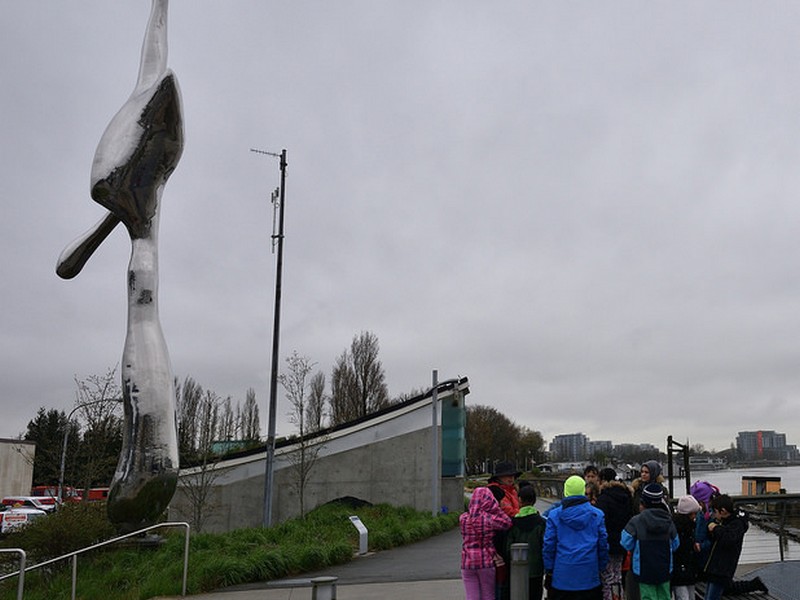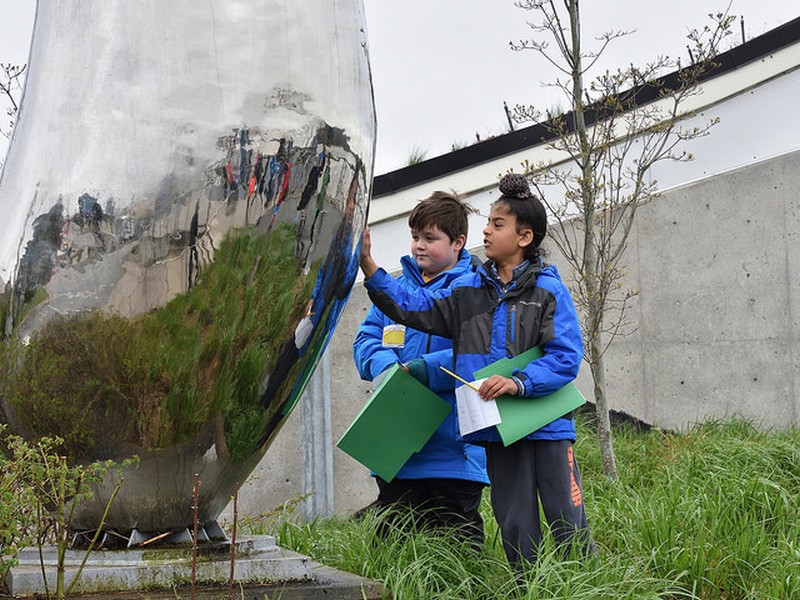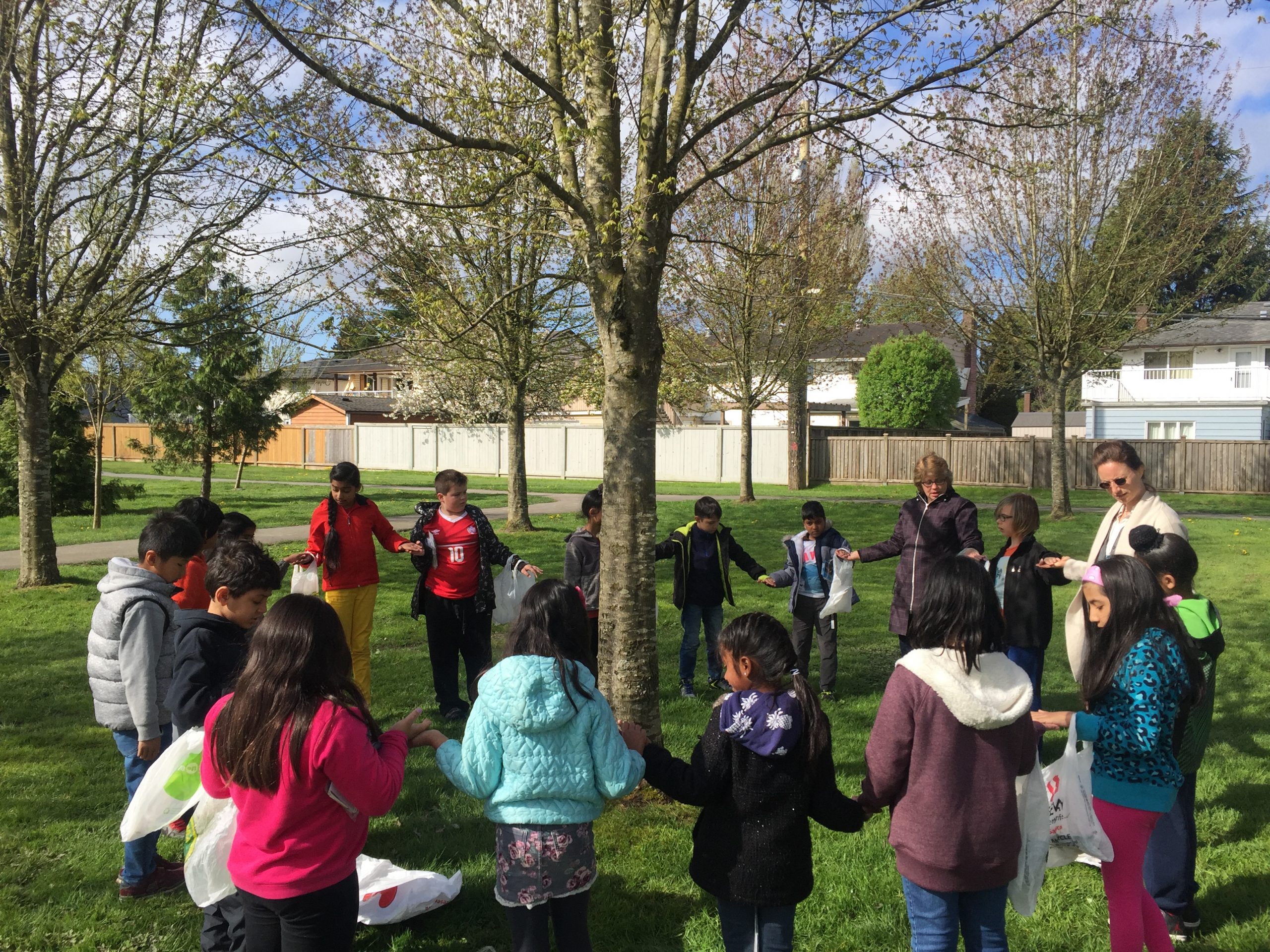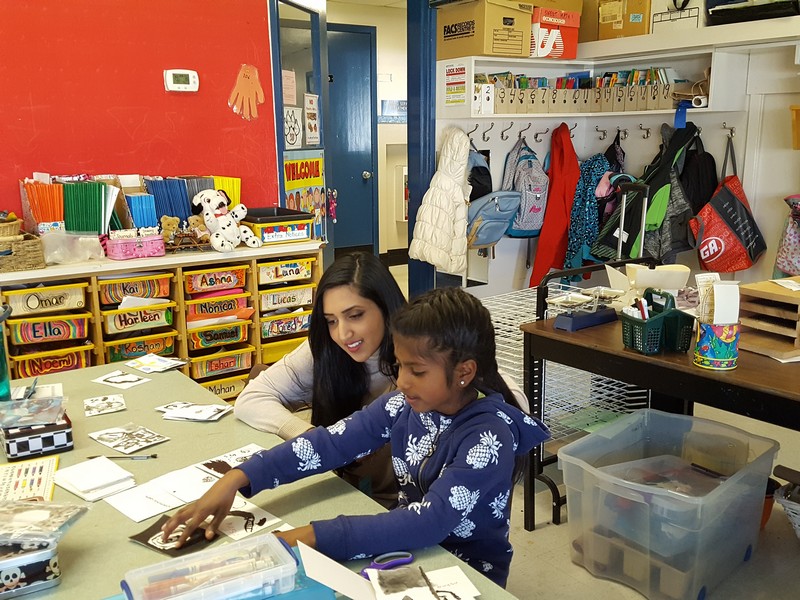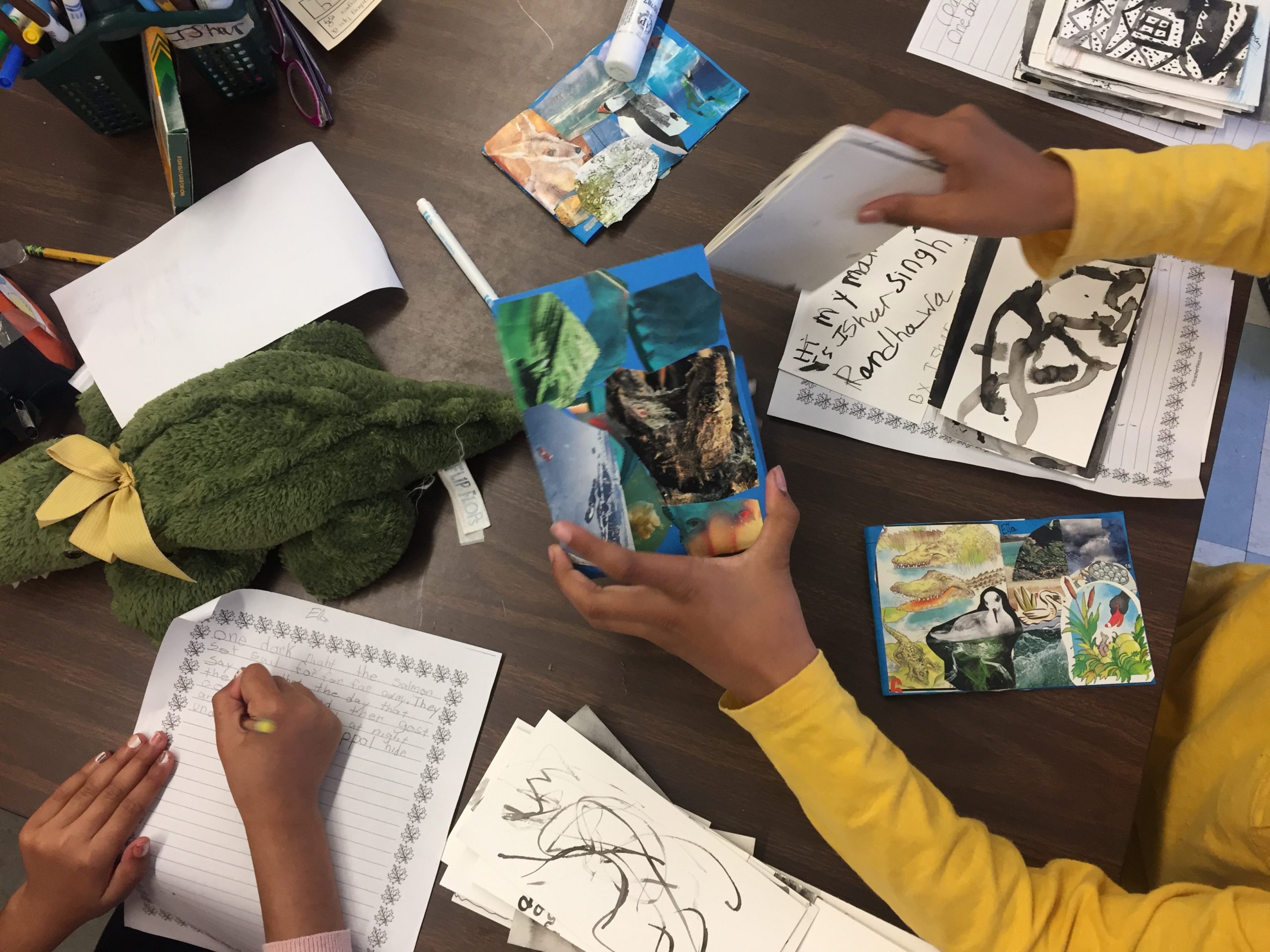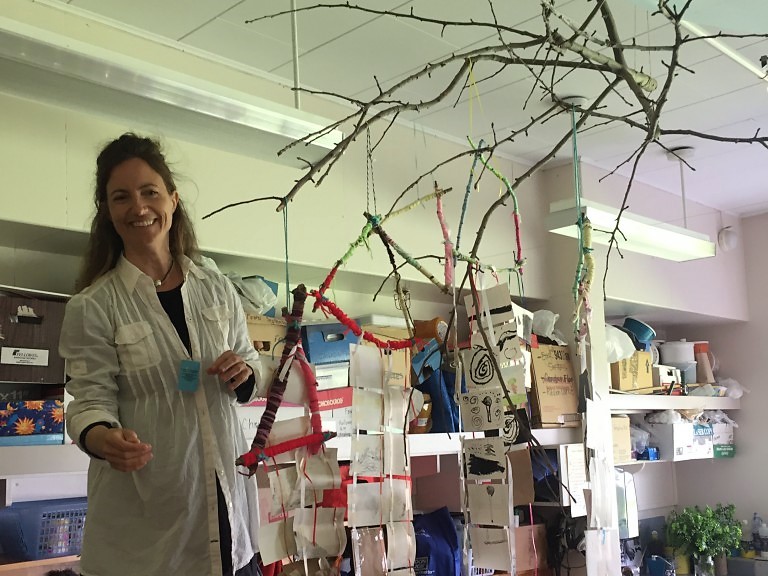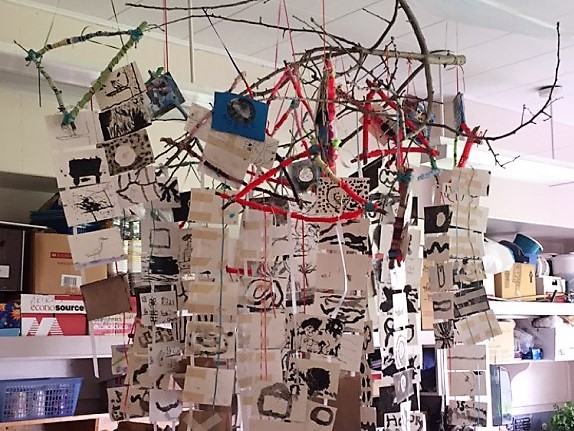Daniel Woodward Elementary: We Are All Connected
Arts Education, Language Arts, Science, Social Studies
School: Daniel Woodward Elementary
Teacher: Ann-Marie Fenn
Artist Collaborators: Daniel Woodward Elementary: We Are All Connected
Overview
In this project, students worked to understand their connections to one another and to the environment. Students engaged in a process of self-reflection and discovery to tell their own personal stories. They developed an understanding of how their stories influence their interactions with others and the world around them. Students also learned about the reciprocal relationship between humans and their environment and how we shape and are shaped by our environments. They learned about the unique environment and landforms of Richmond (the school’s geographical location) and how these physical landforms have influenced the development of their community.
Furthermore, the students learned about how the availability of resources within an environment impacts communities, both their formation and their development. Specifically, students considered the importance of water and how water connects us to each other around the globe. Students developed an appreciation of their impact on this critical resource and how their actions affect the environment both locally and globally.
Working with artist Amy – Claire Huestis, the students visited the local salmon hatchery, as well as Terra Nova Park to consider the role water plays on our Earth and in our lives. Huestis has incorporated watercolor and India-ink painting styles into this project. Each student strung their pictures together creating their own “story.” The class created their own “Tree” with each student’s story cascading down from a branch like water flowing down a stream.
BIG IDEAS
- Exploring and honouring one’s identity creates a sense of pride, which, in turn, fosters a strong connection to the community.
- Individuals committed to working together can effect positive changes in the world.
Guiding Questions
- How does our personal story affect our understanding of our world and influence our connection to our community?
- How does our environment influence our personal story, the way in which we express our individuality and our connection to our community?
Cross-Curricular Access
- Science – Students used their five senses to make close, careful observations of our local environment and how it changes with the seasons (e.g. fall- leaves falling; winter – bare trees, snow on the mountains, etc.).
- Language Arts – Students created and recorded stories using a variety of materials to help deepen their understanding of self, family, community and place. Ideas generated from class discussions about the changes around us and the needs of local wildlife, including salmon provided springboards for Story Workshops.
- Social Studies – Students developed a strong sense of the importance of water to our lives and our community. They took action and went into the neighbourhood around the school and cleaned up all of the waterways (ditches) in the area. They pulled out lots of plastic, bottles, cans and Styrofoam.
Inquiry Challenges/Learning Process
- We Are All Related – Students learned about their own personal stories and family histories and shared these with the class. Students made connections with their classmates and viewed, on a world map, the variety of cultures that make up our classroom community. Students learned how we are connected even though great distances may separate countries.
- Hatching salmon – The students hatched salmon eggs in the classroom. They learned what is needed for the salmon to survive, how salmon migrate and how people have impacted the spawning routes of the salmon. Once the eggs hatched, students released the salmon into a hatchery river system. Students learned the importance of salmon to First Peoples and how the waterways needed by salmon can be protected. The students also engaged in watercolour painting, right on-site. The students actually used water from the natural source at the hatchery to mix their watercolor, thereby actually infusing nature directly into their art. Each student was given a natural material, such as pumpkin stems or dandelions, to use as their paintbrush. After learning about different watercolour techniques from Amy, each student left with their own collection of watercolour images.
- First People’s Principles of Learning – Students learned how indigenous peoples value the well-being of self, land, spirits and ancestors. A variety of literature was shared. The experience of passing on traditions and knowledge orally was explored through learning and sharing stories and role plays from personal experiences (i.e. family traditions) and shared experiences. Students learned how the cedar tree was considered the tree of life by the first peoples by taking a field trip to the Museum of Anthropology in February.
- Creating Stories – The students really considered how art leads to story. The students chose four (or more) of their own watercolour paintings to string together to create their own unique, individual story. Then, using cedar twigs, each student created a triangular structure, held together with yarn. The students strung their watercolour story together and hung them from the structure, creating a mobile. Each student was encouraged to add photos or writing that contributed to “who they were” focusing on their identity. Once complete, a large branch, which was used to depict a tree trunk, was installed in the classroom. Each mobile was hung with this “trunk,” acting as a “branch” of this communal tree. The idea behind this project was to demonstrate how the classroom was home to so many individual stories, and together, these stories created something strong, sturdy, and beautiful – much like a community. Furthermore, each student’s story cascaded down from the branch, like water flowing down a stream, creating yet another connection to water.
The Vancouver Biennale Art Inquiry Experience
The students visited Ren Jun’s Water #10 located at Cambie Plaza, Richmond. The purpose of the visit was to highlight the student’s connection to water and the importance of water in shaping Richmond, island city by nature. Furthermore, Water #10 was a catalyst to raise students awareness of the physical landforms that are connected to Richmond. These include the Fraser River, local mountains, the dyke, and the many life forms that are dependent on this community, including local wildlife. The students also began to develop an understanding of how water connects us all globally.
The students also saw Figures in Stanley Park by Tim Davies via virtual tour. The students then went to Stanley Park to experience the natural environment. The students met with an indigenous plant expert at the park to learn more about local plant species. These experiences continued to develop the students’ sense of connection to the land and their community and to develop an understanding of how people shape the land and transform it for different purposes.
Reflection
Grade 3 Teacher – Anne-Marie Fenn
Working on this project with our artist collaborator, Amy-Claire Huestis, has been a wonderful experience. From our first meeting together the students began working with India ink and subsequently with black watercolour paint. I have seen the skills of the students grow and develop as they experienced the joy of experimenting with these materials. Understanding the importance of water and our own stories came out through the experiences with the materials and the stories that emerged from the students creations. Many of our interactions took place outdoors in natural settings –the school field, the garden beds and courtyard, the dyke, Terra Nova Park and the Little Campbell Hatchery. Working outdoors continued to deepen the students sense of connection to the natural environment and, in turn, their sense of responsibility to care for these beautiful, natural spaces. I believe that working with Amy has helped the students to really take time to look closely and carefully observe what is around them. With her guidance to learn new techniques and the freedom to explore they have created paintings that are very meaningful to them and tell a story. They have a deep sense of pride in their work. It has been a wonderful learning journey with Amy!
Artist – Amy-Claire Huestis
It was a great pleasure to work with Anne-Marie and this class, for so many reasons. Anne-Marie is such a competent and caring teacher, and we shared a deep interest in teaching about nature and helping the children to connect to nature through the project. Also, Woodward school has an unbelievably calm and nurturing atmosphere for this small class of students. Working with a small class of 18 of course gave me so much more time with each student, and made the whole project a dream to teach, compared to the usual large classes in BC.
We kept this project very open, and taught with a style of Open Inquiry, and this allowed for so many magical things to happen and for us to end up with our beautiful construction of the Story Tree. The students ended up with real understanding of their own creative processes — our many moments of reflection provided me with their feedback on this, and it was so interesting to hear about their breakthroughs and inspirations.
All of the children made incredible story trees of their own, and were so proud of them (myself included). They were able to work with really good quality artist materials, and the result of this was they saw how these great materials behave and are so inspiring in themselves (swirling, bleeding, expansive paint in water, etc.).
I feel we did a good job of connecting to the international and diverse student body, paying special attention to the kinds of materials for lectures, etc. , teaching to diversity and multiculturalism, and themes of interconnectedness.
Credits
Learning case prepared by Varsha Sharma, UBC 2017 Teacher Candidate in collaboration with Ann-Marie Fenn and Amy-Claire Huestis
Related Material
 Daniel Woodward Elementary • We Are All Connected
Daniel Woodward Elementary • We Are All Connected